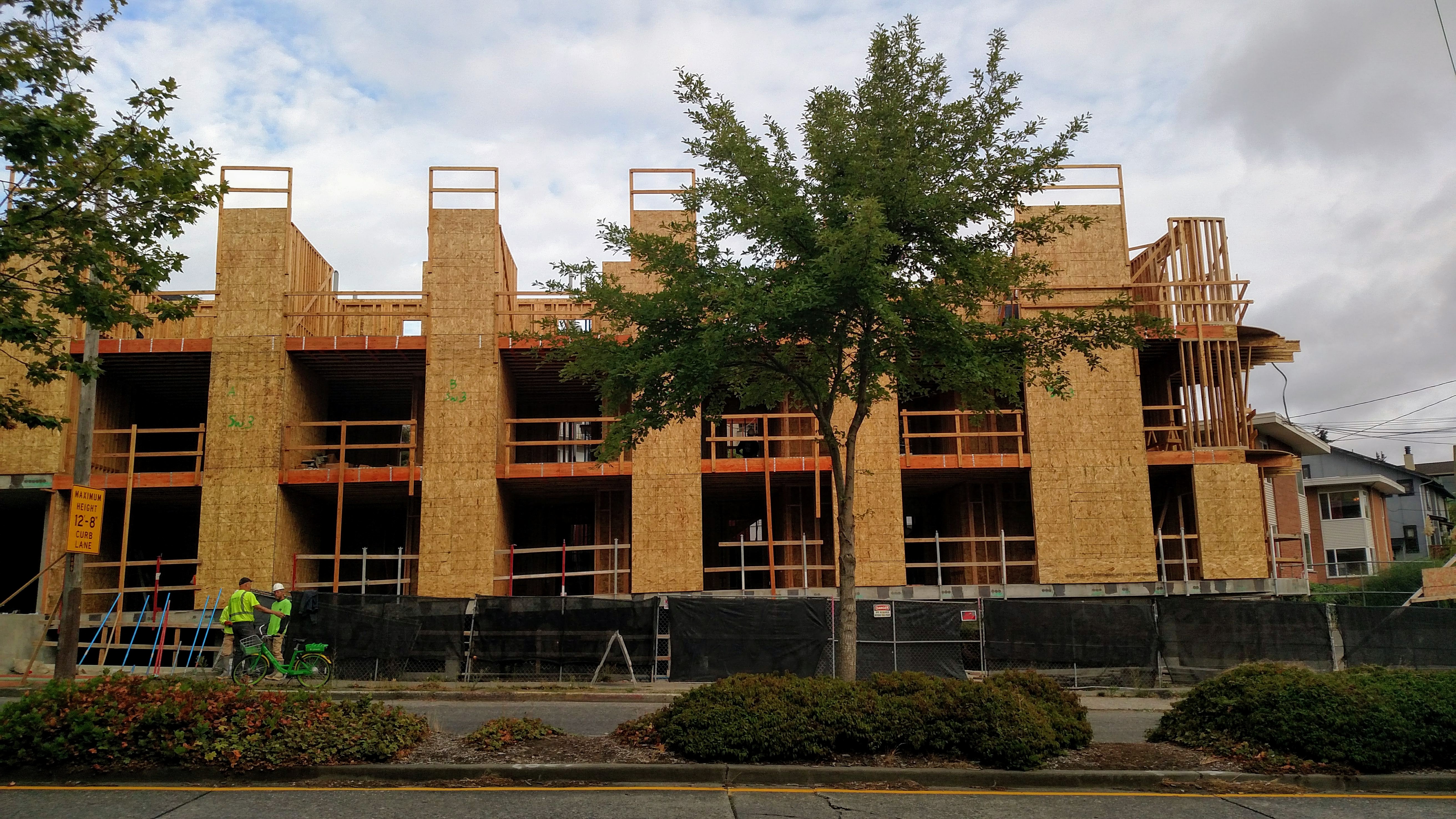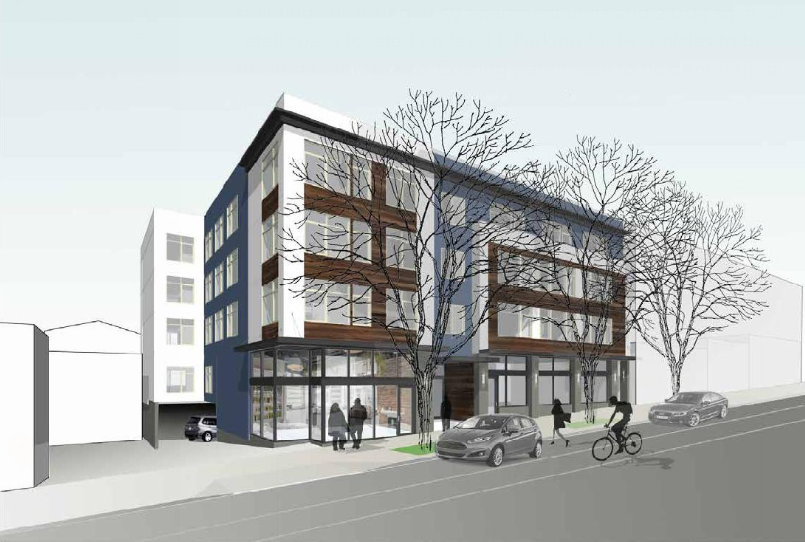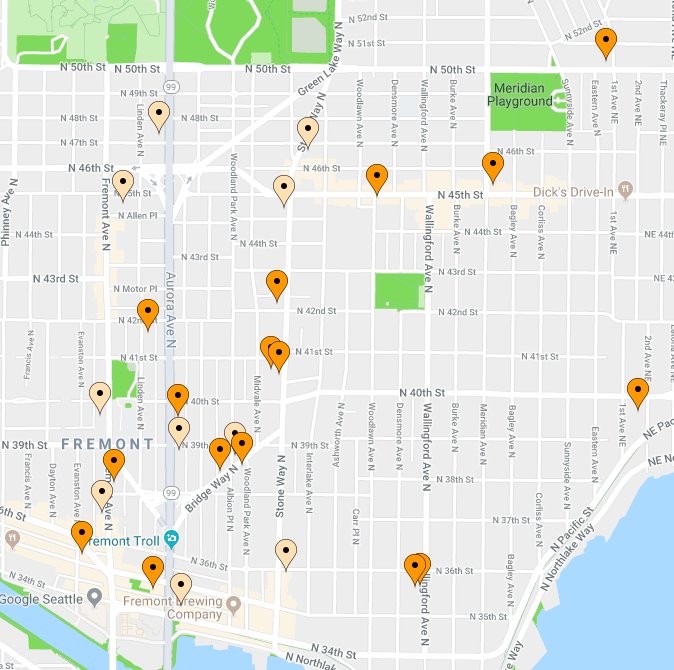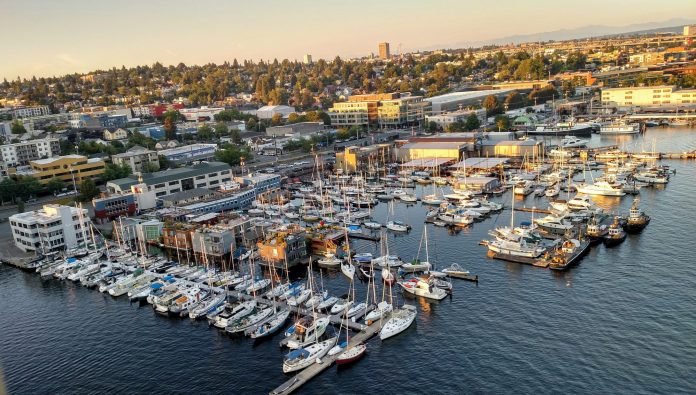Stone Way and the surrounding Fremont and Wallingford blocks continue to be a focal point of new construction. In 2015, I predicted this neighborhood, which some have dubbed “Frelingford”, was developing a retail district to rival Fremont’s 36th Street and Wallingford’s 45th Street corridor. That trend has continued, as new business open on the ground floor of large apartment buildings.
At least 1,500 new apartment homes have been built in Frelingford since 2012, comparatively few have gone in the central districts of Fremont and Wallingford during that time span. Another 500 or so could be on the way based on construction and early designs.
I wrote about the 40 small efficiency homes planned at Stone Way and 47th St; those are still worming their way through design review. The 42 homes planned on Bridge Way–which the builder aims to make the first apartment building to meet the Living Building Challenge–are under construction. Three of the six floors have already emerged from the ground along the north side of Bridge Way.

Construction continues at 3825 Bridge Way N, a building poised to be the first residential building to qualify for Living Building Challenge. (Photo by author)
Also under construction are 59 apartments designed by David Foster Architects at 4025 Stone Way N. The four story building has a handsome brick facade and simple elegance. Next door, 49 more apartments are planned by Clark Design Group in a similar vein. At 4453 Stone Way, 42 more apartments are planned in a four-story building. Each building will also have ground-floor retail on increasingly bustling Stone Way.

Along Aurora Avenue, 147 apartments long planned at 909 N 39th St also might finally be inching toward their master use permit.

The next batch of development includes two more Living Building Challenge contenders: office buildings at 900 N 34th St and 3524 Stone Way N. The new Stone Way five-story office project would replace buildings housing Stone Way Cafe, SeaOcean Books, and Hashtag Cannabis. Although billed as a green building, the developer proposes 110 underground parking stalls to go with approximately 90,000 square feet of office space and 6,000 to 8,000 square feet of street-level retail.
Based on the report from the first Early Design Guidance meeting, the building still has a ways to go to win support from the Northeast Review Board, which wanted to see more variety in massing options and more justifications for departures on Living Building Challenge standards.
The development boom is happening faster than the City is moving on the Mandatory Housing Affordability (MHA) program which would have provide an extra floor or two to redevelopment sites within Urban Villages like Fremont and Wallingford. That program has the Seattle City Council’s support, but is stalled out due to an appeal brought by homeowner groups united under the moniker SCALE. From a legal standpoint, that appeal doesn’t appear to be going terribly well for SCALE, but they have been succeeding in slowing down the process and delaying the upzones that unlock the affordability requirements.
The delay means a longer wait until every new apartment building or condominium brings guaranteed affordable homes to Fremont and Wallingford and urban villages across the city. Some Seattle corridors are in the midst of being transformed, and Stone Way is one of them. MHA could have made the boom more broadly shared across income groups.
The Development of Frelingford
Doug Trumm is publisher of The Urbanist. An Urbanist writer since 2015, he dreams of pedestrian streets, bus lanes, and a mass-timber building spree to end our housing crisis. He graduated from the Evans School of Public Policy and Governance at the University of Washington in 2019. He lives in Seattle's Fremont neighborhood and loves to explore the city by foot and by bike.



